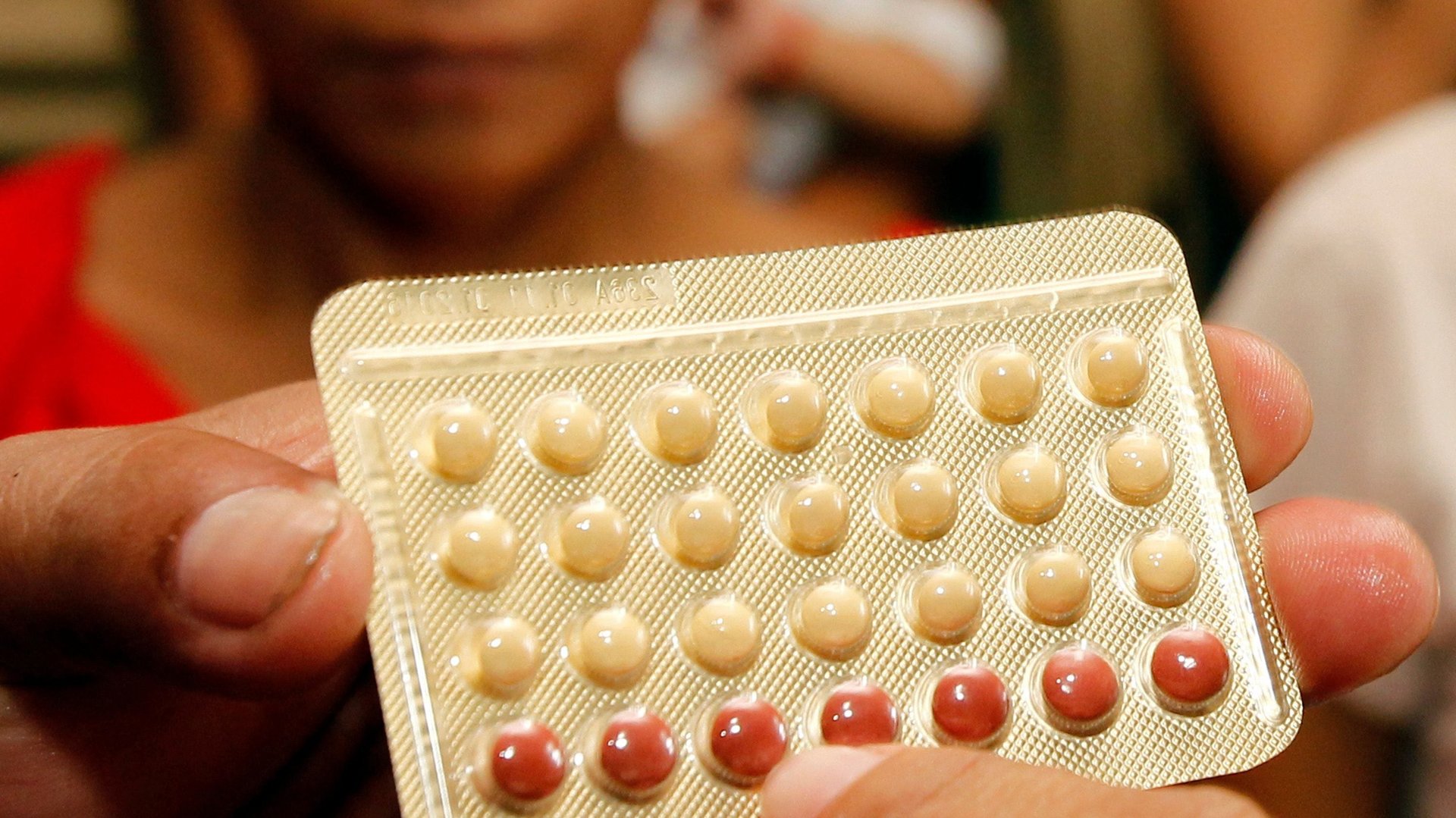A male hormonal birth control is no longer a pipe dream
The lack of contraception options for men is a major problem for the women who like to date them.


The lack of contraception options for men is a major problem for the women who like to date them.
At the moment, men have two options for birth control: either they can receive a vasectomy, a permanent surgical procedure, or they can use condoms, which are great for protecting against infections, but can be ill-fitting or otherwise disliked. Women, on the other hand, have several options—all of which have their flaws—including pills, rings, injections, implantable devices, and even a smartphone app. Because women have more choices for birth control, the onus tends to fall on them.
Scientists based in Seattle and Los Angeles are leading the charge on developing a male hormonal birth control, which would provide a much-needed alternative option for opposite-sex couples. This week, they announced the beginning of a phase-two clinical trial of a topical gel called NES/T, which can be applied daily to lower a man’s sperm count to the point of infertility, and is reversible once they stop using it.
NES/T contains two hormones: progestin and testosterone. The progestin suppresses a man’s sperm production, which in turn signals his body to stop producing testosterone. The testosterone in the gel acts as a replacement hormone. In a previous six-month study, men reported small side effects, mostly weight gain or loss of about five lbs (two kg), says Stephanie Page, an endocrinologist at the University of Washington and one of the lead researchers on the work.
Previous attempts to develop alternative forms of male birth control have so far been unsuccessful. Vasalgel, a non-hormonal product that can be injected into the scrotum and later reversed, has been shown to work in rabbits and monkeys, but is currently licensed to the private nonprofit Parsemus Foundation, which has been unable to fund further development. Page’s group is also working to develop a hormonal pill, similar to the ones available for women, side effects have stalled its progress (a clinical trial for an updated version of this pill is currently underway).
Page and Christina Wang, another endocrinologist at the University of California-Los Angeles, think NES/T has a shot at being successful. The progestin in the gel is a new, pure form of the hormone developed by the Population Council, a research institute based in New York. The purity of it should result in fewer side effects, Page says. And because the gel is topical and can be applied at home, the team hopes that men will be more willing to adopt it than they would be a procedure that required going to a clinic.
The NES/T trial requires a lot from its participants. For the first three to four months, men have to apply the gel to their shoulders daily, wash their hands, and keep the area covered for four hours to ensure no one else is exposed to NES/T. Because it takes time to slow sperm production, couples will still have to use another form of birth control during this time. If the men aren’t experiencing major side effects and their sperm count is low enough after this stage, they will continue to use NES/T for a year, without a backup form of birth control. All the while, they’ll need to return to a study sites to have their sperm counts monitored, and their partners must keep monthly records of their menstrual cycles. After the study period, the couples will be monitored for another six months to ensure they’re still healthy.
Studies in Washington and California are already underway, and trials in Kansas, Scotland, the UK, Chile, Sweden, Kenya, and Italy are slated to start soon.
“If we want men to be engaged in contraception, we really need to have a menu of options for men like we do for women,” says Page.